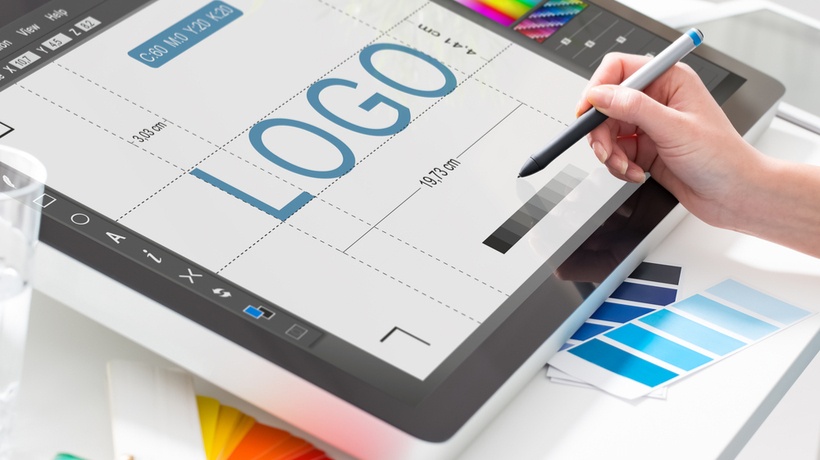How To Use eLearning Infographics: 4 Benefits & 5 Tips
Infographics, or Information Graphics, use images, graphics, charts, and text to convey the key takeaways. Instead of having to read lengthy paragraphs, online learners get a visual overview of the topic or task, which makes it a valuable microlearning tool. Virtually any idea or eLearning concept can be transformed into an engaging, interactive, and easily digestible eLearning infographic that improves knowledge retention. Here are 4 of the advantages of using eLearning infographics, as well as 5 tips to help you apply them in your eLearning course design.
4 Benefits Of Using eLearning Infographics
Numerous studies and surveys have found that online learners remember visual information more effectively. However, we are also bombarded by information on a daily basis, thanks to modern technology. Every time we venture online we are exposed to Facebook posts, tweets, YouTube videos, articles, and a variety of other media that overloads our senses. What makes eLearning infographics so beneficial is that they offer need-to-know information in a visually compelling, but succinct way. Here are just 4 of the other benefits associated with eLearning infographics:
1. Increases online learner engagement
Above all else, eLearning infographics are attention-grabbing. They give online learners the opportunity to acquire the key takeaways quickly and conveniently, without having to sift through an abundance of information. Online learners know that this visually stunning and interactive graphic is offering real value, which automatically boosts their engagement and motivation.
2. Improves comprehension and knowledge retention
Certain topics or tasks are too complicated to explain in text form. For example, a computer repair process may involve a variety of steps that each contain sub-tasks. eLearning infographics simplify these complex ideas and procedures, thereby increasing comprehension. They also improve online learners knowledge retention, due to the fact that they can be reviewed time and again to reinforce the eLearning concepts.
3. Ideal for mobile learning
eLearning infographics may be used as amazing microlearning activities, especially if they focus on a specific topic or idea and aren't lengthy. This makes them ideal mobile learning tools. Online learners can view the eLearning infographic on their tablets or smartphones and get all the information they need from anywhere in the world. As a result, they are a welcome addition to "moment of need" eLearning strategies.
4. Enhances your eLearning brand image
If you put enough time and effort into your eLearning infographic, it is going to promote your brand image. Every online learner who looks at the eLearning infographic is going to know that your eLearning content is of high quality, and they are likely to share it with friends and coworkers. This expands your audience reach and brings new online learners into the mix.
5 Tips For Using eLearning Infographics
1. Choose a targeted topic
One of the most common eLearning infographic mistakes is trying to fit too many ideas into the design. You should focus on one targeted topic, task, or idea in order to avoid cognitive overload. This also gives you the chance to explore the topic at length, so that online learners can get the complete picture. If you attempt to cover too much ground you can only touch on each topic, which also makes your eLearning infographic seem disorganized. Research your target audience and the subject matter to determine what needs to be included and what should be left out. For example, eLearning concepts that your audience already knows can be omitted, which leaves room for new ideas.
2. Always include striking visuals
eLearning infographics are nothing without high quality visual elements, such as images, graphs, charts, and icons. Make them thought provoking, without overstepping the boundaries, and emotionally compelling. That being said, the eLearning infographic should also have a fair share of text to go along with the visuals, particularly when further explanation is necessary. For example, a task-related eLearning infographic must pair text blocks with visuals in order to highlight each step in the process.
3. Make it multiplatform-friendly
Many of your online learners access eLearning content on their laptops, smartphones, and tablets. As such, your eLearning infographic should be more than mobile-friendly, it should be multiplatform-friendly. The most effective way to achieve this is using a responsive design eLearning authoring tool. These eLearning authoring tools allow you to create a master of the graphic, which can then be viewed on all browsers and devices. You can also preview the eLearning content to ensure that it fits every screen size and resolution. In addition, keep an eye on the length and width of your eLearning infographic throughout the eLearning design process. It should be as compact as possible, but still large enough to cover the core concepts. You don't want your mobile learners to scroll through pages and pages of eLearning content in order to view the full eLearning infographic.
4. Double check your data
There is nothing worse than investing time and money into an eLearning infographic, only to discover that your information is completely inaccurate. Double check every fact and stat to ensure that it's 100% correct, and that it's backed by a reliable source, preferably two or more. Ask another member of your eLearning team to review the information and verify the references, just to be safe.
5. Minimize the clutter, maximize the cohesiveness
eLearning infographics offer a short and succinct burst of knowledge. Thus, they should be free of clutter, like extraneous images or lengthy text blocks. Also, every element of the eLearning infographic should flow and have a common theme. For example, the first section of the graphic must somehow tie into the last. If your eLearning infographic content is disjointed, your online learners will try to find relationships and connections when there aren't any.
eLearning infographics may be ideal for visual eLearning experiences, but every member of your audience will benefit from this bite-size eLearning tool if you use these 5 helpful tips. You can also include relevant resources and social media links to make the eLearning experience more interactive and collaborative.
Infographics is also a practical and powerful tool in online training. Read the article The 7 Top Benefits Of Using Infographics In Online Training to discover that infographics can also offer a wide range of benefits in online training.






